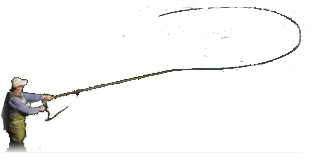
Originally Posted by
oldfrat

Thanks for the help, with special thanks to Greg, for such a detailed explanation!
I had planned to try that hemostat knot on this trip, but found that the hemos I carry have jaws that are way too thick and flat to make it work (more of a multi-tool than standard hemos). I'll try it again with a standard pair of hemos and see if I can get it to work.
Steven, a bobbin threader would also do the trick, but the tippet does the same thing with something we already carry. Indeed, my light bulb came on when I had the thought that I wished I had a bobbin threader with me, and then basically improvised one with tippet.




 Reply With Quote
Reply With Quote
